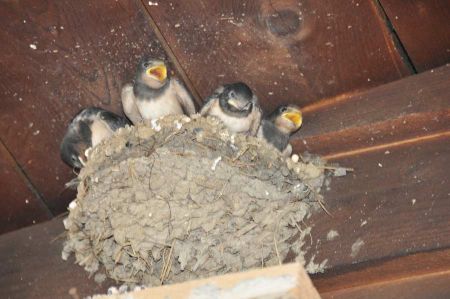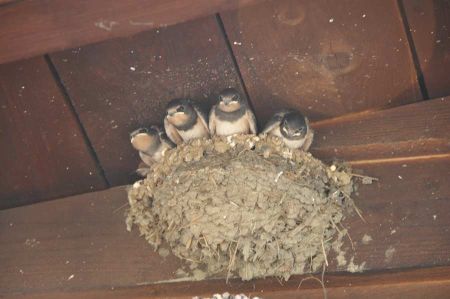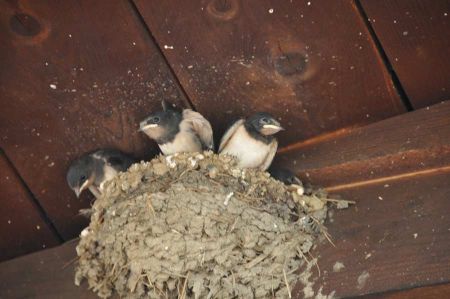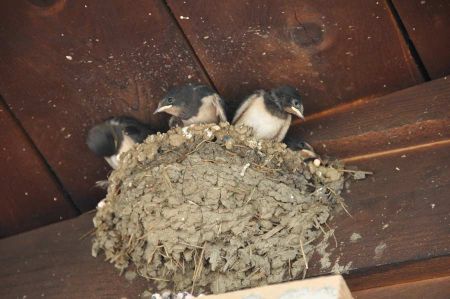Young swallows in the nest - shouting we're hungry!
- Written by Portal Editor
Swallows live, apart from Antarctica, on every continent, like these ones from Lake Skutari / Albania, so they are really nothing special one would like to say.
Many subspecies are restricted to narrow or special distribution areas, the Barn Swallow and Sand Martins are on both sides of the Atlantic encountered as migratory birds. Despite, or perhaps because of that, it is always interesting to watch the swallows building a nest and later to watch the young birds growing.
They usually fix their nests on vertical walls under natural or artificial overhangs, for example, rock projections, eaves, roof edges or doorways, almost always near human habitation. Nests outside of human settlements, as on isolated structures such as highway bridges, for example, are quite rare. If there are already existing nests, these are preferably used.
A prerequisite for nesting is, that the clay used as a building material is directly present in the environment and adheres in its consistency even at the "construction place", especially good adhesive body secretions are required for the construction, which are provided in the swallow saliva. The evolution of this nesting behavior and endogenously produced substances requisite permits phylogenetic inferences. If the nests built on rock surfaces places have to be selected that they are free of mosses and lichens. Unlike the Barn Swallow House Martins build nests only in exceptional cases within buildings.
On nesting both parents are involved; their start of construction is dependent on weather and altitude. The nest will be built of damp clay or clods of earth, the animals always continue building the nest wall from the inside. The building material swallows get from watersides, puddles or similar places. Finished nests have a closed, hemispherical form. The entrance hole is located above. Interior nests are padded with blades, springs and similar soft material. The nesting period takes 10 to 14 days to be completed.
The resulting nest is also often used by other birds to nest, so house sparrows regularly try to conquer nests begun by swallows. If they do, the swallows begin to build their nest again at another location. When nests are finished, the entrance hole is so small that house sparrows are excluded.
Characteristic of the swallows is their adaptation to foraging in the air: They especially love flying insects. The altitude of these insects increases massively in good weather by rising warm air masses. However, when they fly much lower on their own, will be influenced from a low altitude, the swallows indicate bad weather.
Swallows have a slender, streamlined body and long, narrow wings. The beak is short and can be opened wide. The feet are tiny and to small for gripping. Many species have long tails. Swifts and terns do not belong to this family.
Swallows are colony breeders and the nests are sometimes built so close together that they touch each other at their base. Colonies usually consist of four to five nests. But there are also colonies occupied, which included thousands of nests.
Since flying insects in North and Central Europe are reduced in winter, swallows have to move to their winter quarters.
Please read as well:
Historical perspective on Turkey´s fruit heritage



